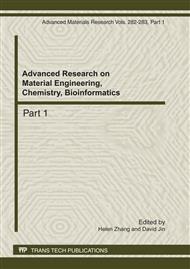p.509
p.514
p.518
p.522
p.526
p.531
p.535
p.539
p.545
Isolation and Identification of a New Pathogen Causing Mulberry Bacterial Wilt Disease
Abstract:
To identify the pathogen of Mulberry wilt disease, a tested strain WJ-1 was isolated from a naturally infected mulberry in Guangzhou, Guangdong province, P. R. China. Hypersensitive reaction, along with Koch’s postulates, morphological, biochemical and physiological characterization, light microscope observation and molecular identification were performed on WJ-1. The results indicated that WJ-1 was a Gram-negative, short-rod shaped bacterium. Based on morphology and the 16S rRNA gene sequence analysis, WJ-1 strain was identified as members of the genus Enterobacter. The phylogenetic tree revealed that WJ-1 shared the highest homology with Enterobacter cloacae strain M5. It was another evidence on plant disease caused by Enterobacter species. We found that Enterobacter species could cause mulberry wilt disease in Guangzhou.
Info:
Periodical:
Pages:
526-530
Citation:
Online since:
July 2011
Authors:
Price:
Сopyright:
© 2011 Trans Tech Publications Ltd. All Rights Reserved
Share:
Citation:


